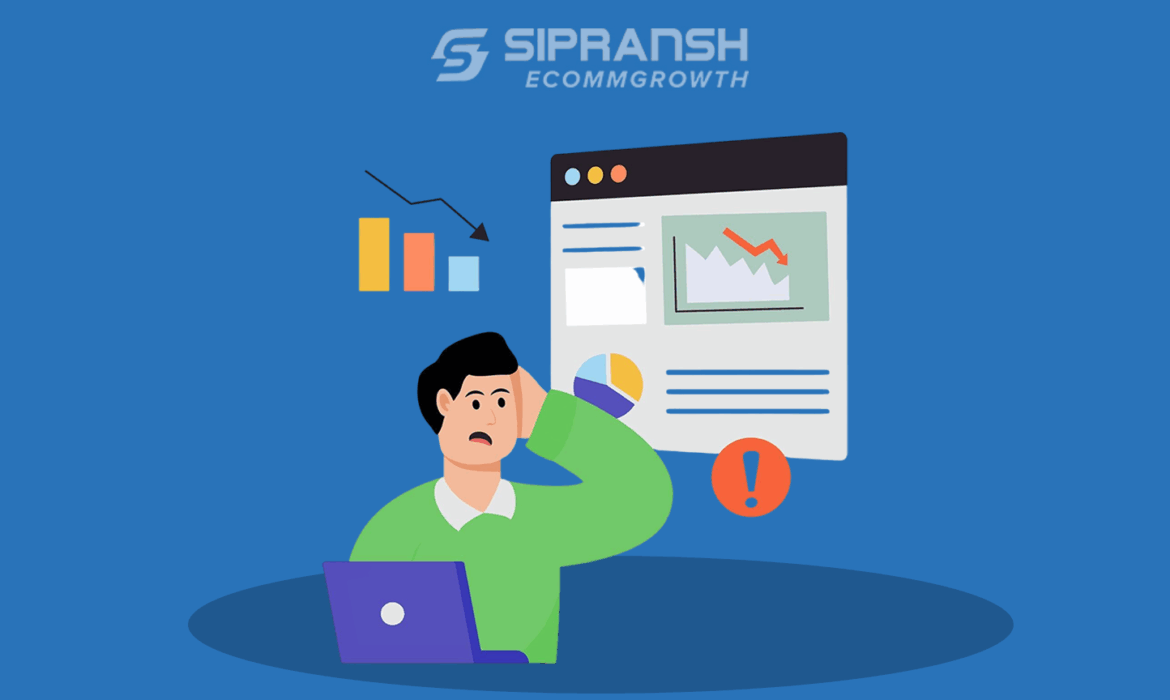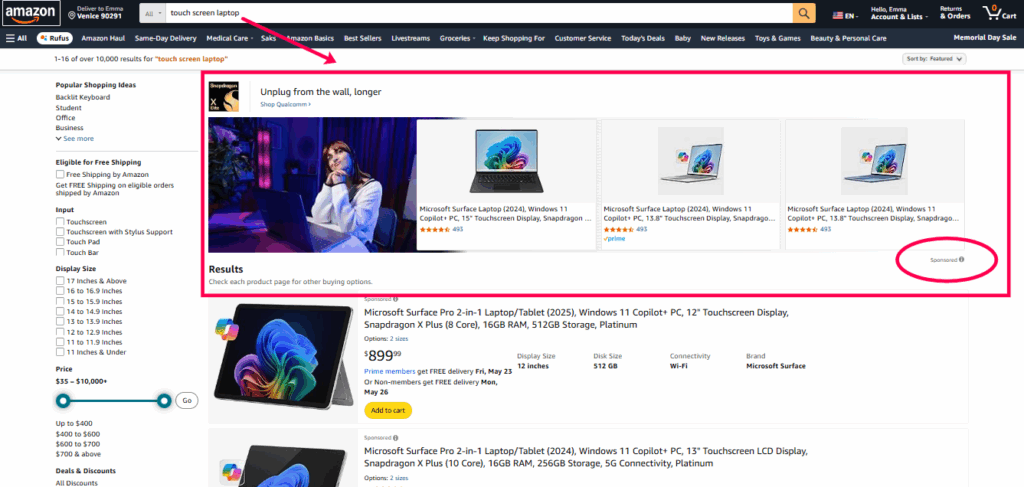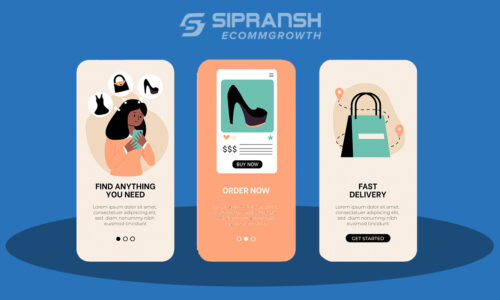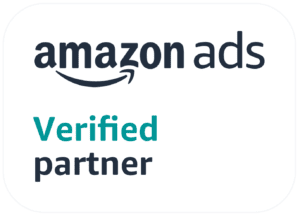
According to Jungle Scout, 59% of brands running Amazon PPC campaigns are experiencing rising advertising costs.
When PPC campaigns are not properly optimized, they can lead to wasted budgets and lost sales opportunities. If your ads are eating up your funds without delivering results, it’s time to identify and fix the issues.
That’s exactly what this article aims to help you do.
We’ll cover the most frequent PPC challenges sellers face and provide clear, actionable solutions. You’ll learn how to refine your Amazon PPC strategy to improve performance and drive more sales.
Let’s dive in.
What are Amazon PPC campaigns & are they worth it?
Amazon PPC (pay-per-click) is an advertising method where sellers are charged only when a user clicks on their ad. It helps display your products to potential customers actively browsing for related items or keywords on Amazon, ultimately enhancing visibility and boosting sales.
For example, if you’re selling high-end kitchen knives, you might bid on terms like “top chef knives” or “premium kitchen tools.” This allows your ads to show up in relevant search results, increasing the likelihood of attracting clicks and converting shoppers.
Why Work with an Amazon PPC Expert?
According to Jungle Scout, 71% of third-party sellers and 79% of first-party sellers use some type of PPC on Amazon to increase their sales. These campaigns connect you directly with buyers who are already looking for products like yours, giving you a better shot at conversions.

Three Key Advantages of Running PPC Campaigns:
- Higher Product Visibility: Ads appear at the top of Amazon search pages, ensuring more eyes on your listings.
- Controlled Spending: You can manage your budget effectively and only pay for actual clicks, maximizing return on investment.
- Boost in Organic Ranking: More sales through ads can help your product climb higher
How to Fix Amazon PPC Problems (9 Effective Tips)
Spot the weak areas in your current Amazon PPC strategy and apply these practical solutions and tools to enhance your campaign performance.
1. Tweak Your Keywords & Bids If You’re Getting Clicks Without Sales
According to Loud Digital, using exact match keywords can improve your Amazon PPC performance by 56.55%, compared to just 27.34% with broad match keywords.
If your ads are receiving clicks but failing to generate sales, your bidding and keyword targeting may be misaligned. You might be targeting keywords that attract the wrong audience or paying too much for terms that don’t convert.
Here’s how to resolve it:
- Lower bids for exact match terms and underperforming ad groups.
- Use tools like Helium 10’s Cerebro to find keywords with poor performance—those with high CPCs but low conversions or under 1% conversion rates.
- Avoid phrase-match keywords in high-priority campaigns, as they can show your ads for unrelated searches (e.g., “how to roast organic coffee beans” when you’re targeting “organic coffee beans”). Opt for exact or broad match, especially branded terms.
- Use negative keywords to filter out irrelevant traffic. For example, if you sell men’s footwear, block keywords related to women’s shoes to prevent wasted ad spend.
- Customize your bids per SKU rather than applying the same bid across all products. Consider using bid automation tools for smarter bidding based on product performance.
- Run keyword discovery campaigns with Helium 10. Start with broad match keywords to identify high-performing terms, and then transition those into exact match for better targeting in Amazon’s organic search results.
2. Define an ACOS Target to Streamline Campaign Optimization
The typical ACOS (Advertising Cost of Sales) for Amazon sellers ranges between 25% and 40%, as reported by Jungle Scout.
Establishing a clear ACOS target within this range helps ensure your ads remain cost-efficient while still driving sales. It also gives you a benchmark for how much you’re willing to spend on ads relative to the revenue they generate.
For instance, if you set your ACOS goal at 20% and your product profit margin is 25%, you’ll still earn a profit while growing sales.
Here’s how to apply this strategy:
- Calculate your break-even ACOS based on your profit margin. If your margin is 30%, aim for an ACOS below that to stay profitable.
- Use Amazon’s Dynamic Bidding (Down Only) to automatically reduce bids when your ACOS is higher than your target.
- Shift your focus toward profitable campaigns, even if they receive fewer clicks, as long as they stay within your desired ACOS range.
- Pause or remove campaigns that repeatedly exceed your ACOS goal and invest that budget into ads and keywords with better returns.
- Track performance using Amazon’s dashboard. Tools like SellerApp can help automate daily or weekly monitoring, making it easier to stay on top of your target ACOS.
3. Set Clear Amazon PPC Goals for a Well-Structured Campaign
According to CoSchedule, marketers are four times more likely to achieve success when they set specific goals for their campaigns.
If your goals aren’t clearly defined, it becomes difficult to track performance or improve your campaign strategy. Whether your objective is to boost visibility or increase conversions, having a clear focus from the start is essential.
Well-structured, goal-oriented campaigns are more likely to deliver measurable, successful outcomes.

Here’s how to establish and manage your goals:
- Break larger goals into SMART goals—Specific, Measurable, Achievable, Relevant, and Time-bound. For instance: “Grow sales for by 15% during Q4.”
- Set up individual campaigns for separate goals. Use Sponsored Brands for increasing brand recognition and Sponsored Products for driving sales.
- Apply consistent naming formats to keep your campaigns organized by product, purpose, and time period (e.g., “[ProductName_Sales_Q4]”).
- Schedule quarterly goal reviews to reassess and adjust based on market trends or changes in product performance.
- Track each goal independently using metrics like conversion rates and ACOS within Amazon’s Campaign Manager to evaluate success and make improvements.
4. Optimize Your Listings and Product Pages to Increase Conversions
Roughly half of potential buyers take up to 28 minutes to make a purchase once they reach a product detail page with strong purchase intent.
Even the most well-planned Amazon PPC strategy won’t deliver results if your product page fails to meet shopper expectations. To turn ad clicks into actual sales, your product listings must be fully optimized for conversion.
Well-structured and informative listings also build customer trust, especially in competitive niches like health and wellness. Brands such as Green Supply, which sell trust-driven products, benefit from clear product details, transparent information, and visual proof to reassure buyers and boost conversion rates.
Here’s how to improve your listing quality:
- Add primary keywords in your title and emphasize product benefits in bullet points. Tools like Helium 10 can help streamline listing optimization.
- If you’re brand is registered, use Amazon’s A+ Content to include rich visuals and expanded descriptions that enhance shopper engagement.
- To strengthen credibility, aim for a minimum of 15 product reviews. Use follow-up email tools like Helium 10’s Follow-Up to request reviews from satisfied customers.
- Promote discounts and special deals like coupons prominently on the product page to encourage faster purchasing decisions.
- Incorporate cost-saving sales channels such as dropshipping to complement your Amazon strategy, reduce initial expenses, and broaden your reach.
- To better showcase your product, use high-resolution photos and videos, including lifestyle shots and detailed infographics. Free tools like Canva can help create compelling visuals.
5. Track Campaign Performance to Drive Smarter Optimizations
Regularly reviewing your Amazon PPC data and fine-tuning your strategy can result in up to a 200% return on investment (ROI).
By consistently analyzing your advertising metrics, you’ll gain clear insights into what’s delivering results and what isn’t. This proactive approach helps prevent wasted ad spend and allows you to build stronger connections with your audience through relevant, targeted campaigns.
Here’s how to stay on top of performance:
- Evaluate your ACOS weekly using Amazon’s Campaign Manager to ensure each campaign stays within your desired range.
- Use Amazon Attribution to identify which ads generate traffic from external sources. Then, redirect the budget toward the channels that perform best.
- Regularly review your search term reports to find out which keywords, especially branded ones, are converting the most. Streamline this process using tools like Helium 10 to automate keyword analysis and optimization.
6. Use Smart Bidding Strategies to Control Costs and Maximize Sales
Overspending on Amazon ads without seeing results often comes down to poor bidding choices. Adopting the right bidding strategies can help you reduce costs while maintaining or boosting sales performance.
Amazon provides three main bidding options:
- Fixed Bids
- Dynamic Bidding (Down Only)
- Dynamic Bidding (Up and Down)
Knowing how and when to apply each strategy is essential for cost control and campaign success.
Here’s how to optimize your bidding:
- Choose Fixed Bids for short-term or seasonal promotions where you already know how certain keywords perform, such as Black Friday or holiday deals. This gives you full control over your CPC.
- Go with Dynamic Bidding (Down Only) when testing new campaigns or using low-converting keywords. This strategy helps prevent overbidding by lowering your bid when Amazon detects a lower likelihood of a sale.
- Use Dynamic Bidding (Up and Down) for top-performing keywords with strong conversion history. This allows Amazon to raise your bid when the chances of a sale are higher.
- Utilize Amazon’s “Adjust Bids by Placement” tool to boost bids for premium positions like top-of-search, which can improve visibility and click-through rates.
- Regularly analyze your bidding impact on ACOS to determine which strategies are most efficient and adjust your approach accordingly.
7. Use Amazon PPC Automation to Streamline Ad Management and Boost Efficiency
About 65% of high-intent searches lead to clicks on sponsored ads, making automation a powerful tool to improve campaign performance while saving time. Automating repetitive PPC tasks allows you to focus on core areas like strategy, keyword analysis, and campaign scaling instead of manual bid adjustments.
Automation tools let you create rules tailored to each campaign, helping you manage ad performance more effectively.
Here’s how to make automation work for your campaigns:
- Automate negative keyword management by setting up rules that remove poorly performing keywords automatically. Tools like Helium 10 can help prevent wasted ad spend through smart keyword exclusions.
- Use automated performance reporting to receive regular updates on your campaigns. Daily or weekly reports generated by tools like Helium 10 give you quick access to critical performance data.
- Apply automation to maintain bids on low-ACOS, high-performing campaigns to ensure stability and continued success.
- Create dynamic bid rules to increase bids for keywords delivering strong results and reduce them for those underperforming.
- Customize automation settings using tools like Ad Badger to adjust bids based on KPIs such as conversion rate, ACOS, or ROAS, keeping your campaigns optimized at all times.
8. Align with Search Intent to Build Stronger Customer Connections
Around 80% of your potential customers begin their journey with informational search intent, while the rest lean toward navigational or transactional searches.
Search intent refers to what a shopper is hoping to achieve when they type a keyword into Amazon’s search bar. Understanding this intent allows you to serve highly relevant ads, improving your conversion rate and campaign efficiency. Tailoring your ad copy and keyword selection to match intent helps your ads resonate more deeply with your audience.
Here’s how to optimize for search intent:
- Develop detailed buyer personas to better understand what your audience is looking for and how they search for it. This helps you identify intent across various customer profiles.
- Craft ad copy that reflects the user’s intent. For example, if users search for “affordable outdoor gear,” highlight cost-effective solutions rather than just premium quality.
- Use long-tail, intent-driven keywords rather than broad terms. Instead of just “hiking boots,” try “top-rated hiking boots for beginners” to better match user needs.
- Segment your campaigns by intent using Amazon’s campaign manager. Create dedicated ad groups for users in different stages—awareness, consideration, or ready to buy.
- Analyze your search term reports regularly to find keywords that align closely with user goals. Shift the budget toward terms that generate the most conversions based on intent.
9. Leverage Video Ads to Expand Customer Reach
Video ads can boost customer purchase intent by up to 35% by delivering detailed product information and creating stronger engagement. These ads allow shoppers to see your product in use, understand its key features, and connect emotionally, making them more likely to buy.
Video content not only grabs attention but also builds trust by offering a realistic preview of your product. For instance, a brand like iNats Batana Oil can use video to showcase hair growth. A clip of elders with and without using oil.
Here’s how to make the most of video ads:
- Invest in high-quality production using professional services or platforms like VideoAds to ensure your video showcases your product clearly and compellingly.
- Focus on your product’s standout features. Emphasize elements like convenience, durability, or innovation. Keep videos concise—ideally under 30 seconds for Sponsored Brand Videos.
- A/B test different versions of your video ads. Try out varying lengths, messaging angles, or visuals to find what connects best with your audience. Use tools like Jungle Scout to test performance within campaigns.
- Embed videos on product detail pages to reinforce key selling points and engage shoppers directly on your listings.
- Track performance with video-specific metrics like views, click-through rates, and conversions using Amazon’s video ad reporting. Adjust your strategy based on what resonates most with your audience.
5 Steps to Run Effective Advertising Campaigns on Amazon
Identify gaps in your current advertising approach and fine-tune your strategy every couple of months using these key steps:
- Evaluate your budget to ensure it can adequately support your campaigns. Make bid adjustments as needed, and consider using dynamic bidding (down only) to control costs and prevent overspending.
- Enhance your product listings in tandem with your ads. This includes refining titles, bullet points, and visuals to increase conversion rates.
- Establish clear performance goals and track them weekly through Amazon’s Campaign Manager. Keep an eye on metrics like ACOS, CPC, and ROAS to measure your progress.
- Automate repetitive actions and create comprehensive performance reports using reliable automation tools. This will highlight areas that need improvement and save you valuable time.
- Experiment with various ad types to discover what works best for your audience. Try Sponsored Brands, Sponsored Display, and Sponsored Products to see which formats yield the strongest results.
Conclusion
Start by fine-tuning your keyword strategy and adjusting your bids to make the most of your advertising budget. Once you begin to see results, you can scale your efforts using more advanced tactics like automation or location-based targeting.
At SIPRANSH ECOMMGROWTH, we help Amazon sellers like you simplify and supercharge their PPC efforts. With 10+ years of hands-on experience in customizing and managing profitable campaigns, we’re here to help you lower ad costs, increase conversions, and stand out in your category.
Get in touch with us today to elevate your Amazon PPC strategy and drive better results.






